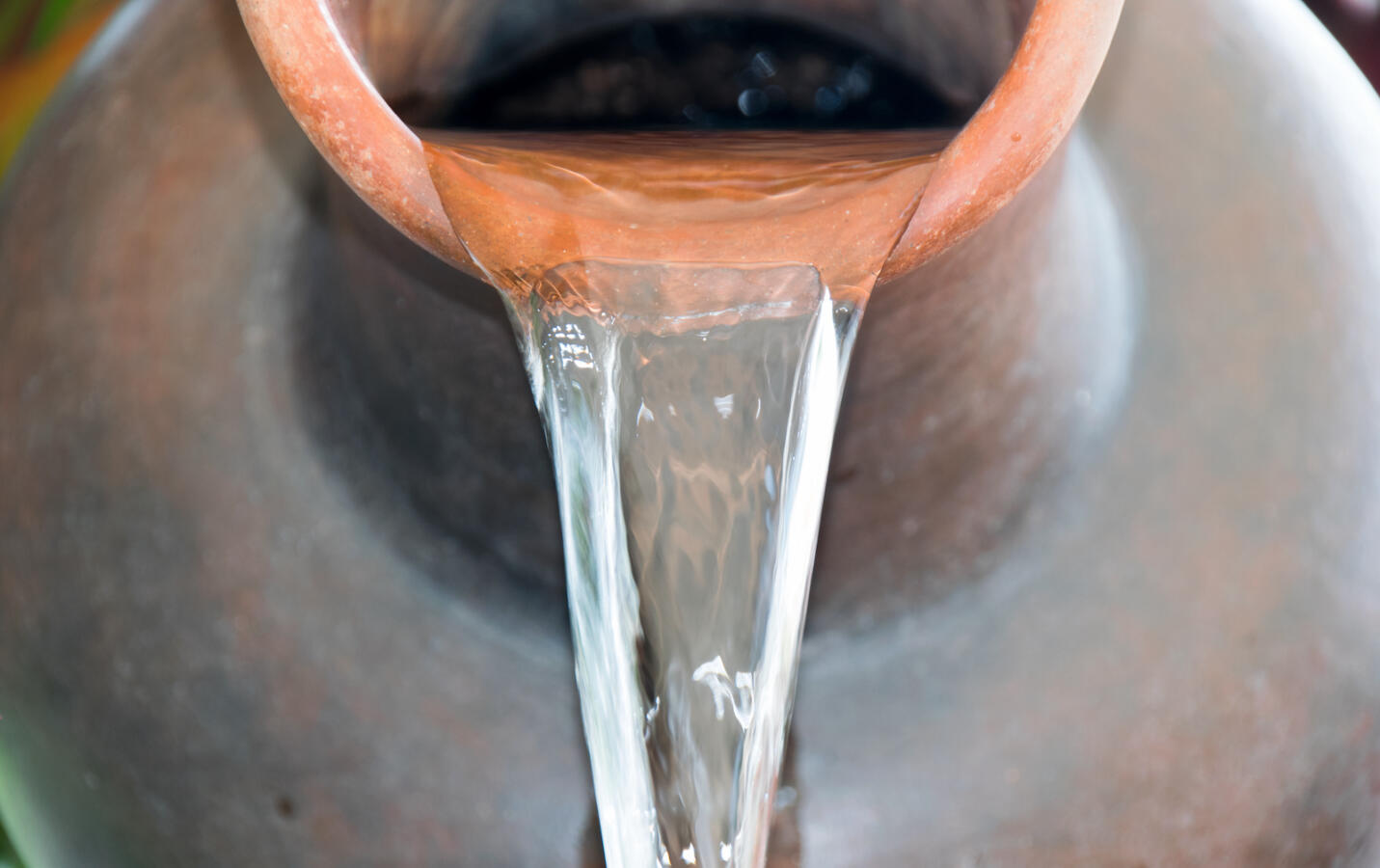Simchat Beit Hashoevah, the Rejoicing in the House of the Water-Drawing, was a harvest rite that took place in the Temple on the second night of Sukkot. It centered not on animal sacrifices but on a water libation. The Talmud describes the event as the Jewish ecstatic communal ritual par excellence: “One who never saw the Simchat Beit Hashoevah never saw joy in their life.” This is perhaps the talmudic equivalent of “you had to be there.”
The Talmud describes the ritual in ornate detail. The outer courtyard of the Temple, called the Women’s Courtyard, was decorated with four immense candelabras and was accessible to all Israelites, so the whole community could witness the ritual. Sages would juggle and dance and make merry all night while the Levites played instruments and sang the 15 psalms of ascent. In the morning, trumpets sounded as water was brought to the Temple and poured onto the altar. The ritual embodied the people’s prayers for water and their fervent wish for rain in the coming year.
The ritual takes on even more meaning when we consider a story the Talmud tells about King David digging the shittim, the pits or drainage pipes, below the Temple. Elsewhere in the Talmud, we learn that these pits “were created during the six days of creation … are hollow and descend into the primordial depths.” When David digs these pipes, he taps into the primordial depths, which rise up and begin to flood the world. In one version of the story, told in the Jerusalem Talmud, David dislodges the foundation stone that God set in place to hold back chaos and allow the world to exist. In that version, the stone itself explains its role in the universe and warns David not to move it, but David doesn’t comply.
So the waters rage forth and threaten to consume everything. In consternation, David determines he must throw a pottery shard engraved with God’s name into the waters to make them subside. When he does, the shard seals up the waters. But now, there isn’t enough water, for the shard has made all the wells dry up. So David sings 15 psalms to cause the water to rise to its proper level. This, according to the Talmud, is the origin of the 15 psalms that the Levites sing as part of the ritual.
With your help, My Jewish Learning can provide endless opportunities for learning, connection and discovery.
While the Talmud doesn’t say so explicitly, when the water libation is poured on to the altar, it flows into the ancient channels beneath the Temple, thus returning to the great deep. In a sense, the Simchat Beit Hashoevah does teshuvah for David’s act. Rather than taking the water as David did, the ritual returns the water to the primordial place where it began.
I have often tried to put myself in David’s shoes. What must it have been like to dig the foundations for a building and come across something beyond any human’s capacity to create? Why didn’t the king listen to the stone’s warning? Did he think himself too important to listen to a stone? And what about his solution — the shard and the 15 psalms? Perhaps this is a story about the magical uses of God’s name and the ways we humans can channel divine powers. Or perhaps it is about the incredible power of song. Or maybe it expresses the necessity of balance: not too much water nor too little, but just right, as in the tale of Goldilocks. I see this tale as a story of King David’s return to humility, as he realizes that the only fix for the problem he caused is to turn to a power much greater than he is.
As a 21st-century person, I can’t help but read my own generation’s troubles into this story. In this reading, we dislodged our ecosystem from its proper place and now must face the consequences of not having listened to the warning. This is even more sobering to say in the wake of the terrible damage in recent weeks to lives, communities and homes in Florida, Puerto Rico and elsewhere. While we may not have an engraved pottery shard to toss into the rising waters, we surely must seek to restore a lost equilibrium and learn again to respect the powers of nature. This is a Sukkot story not only because it describes a ritual that once took place on that holiday, but because, like the frail and open sukkah itself, it addresses human vulnerability in the face of the elements, gratitude for the natural world and awareness of the dangers when we don’t pay attention.
The story also teaches that what we damage, we can also repair. I see this as a story of hope, in which the 15 psalms become not only a prayer for rain, but also healing for a hurt world. And this is perhaps why the tale appears in the description of the Simchat Beit Hashoevah, which is a ritual of hope — for rain and sustenance for generations to come.
I have a long relationship with the ritual of the Simchat Beit Hashoevah. I’ve written poems about it and participated in contemporary revisionings of it at the Isabella Freedman Jewish Retreat Center. In those celebrations, we carry torches and bowls of rainwater to a fire pit, pray for the right amount of water to fall from the heavens and express our gratitude for all that sustains life. People dance around a bonfire, drum and play instruments. There’s something about the joy of that moment that feels like it comes from beyond ourselves, like we’ve tapped into an ancient, deep, and all-encompassing joy: the joy of the water-drawing, which is joy in life itself.
This article initially appeared in My Jewish Learning’s Shabbat newsletter Recharge on October 15, 2022. To sign up to receive Recharge each week in your inbox, click here.



